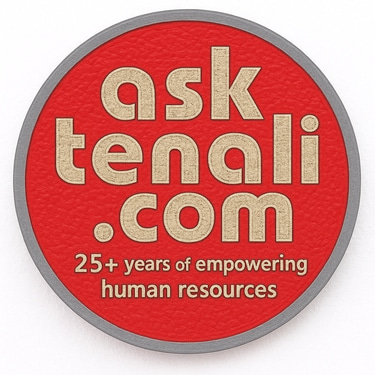Decentralized Finance (DeFi): How It’s Disrupting Traditional Banking
#DecentralizedFinance, #DeFi, #Cryptocurrency, #Blockchain, #SmartContracts, #CryptoInvesting, #DeFiLending, #YieldFarming, #Bitcoin, #Ethereum The financial landscape is undergoing a monumental transformation, driven by the rise of Decentralized Finance (DeFi). Built on blockchain technology, DeFi is bypassing traditional financial intermediaries, providing users with faster transactions, lower costs, and unparalleled accessibility. As cryptocurrency lending, yield farming, decentralized exchanges (DEXs), and smart contracts gain traction, the traditional banking sector faces mounting pressure to innovate or risk obsolescence. This blog delves deep into how DeFi is revolutionizing global finance, reshaping traditional banking models, and redefining the future of financial services. We’ll explore key DeFi features, its impact on banking institutions, and the challenges and opportunities ahead.
FINANCE BANKING
Asktenali
3/8/20253 min read
Decentralized Finance (DeFi): How It’s Disrupting Traditional Banking
#DecentralizedFinance, #DeFi, #Cryptocurrency, #Blockchain, #SmartContracts, #CryptoInvesting, #DeFiLending, #YieldFarming, #Bitcoin, #Ethereum
The financial landscape is undergoing a monumental transformation, driven by the rise of Decentralized Finance (DeFi). Built on blockchain technology, DeFi is bypassing traditional financial intermediaries, providing users with faster transactions, lower costs, and unparalleled accessibility. As cryptocurrency lending, yield farming, decentralized exchanges (DEXs), and smart contracts gain traction, the traditional banking sector faces mounting pressure to innovate or risk obsolescence.
This blog delves deep into how DeFi is revolutionizing global finance, reshaping traditional banking models, and redefining the future of financial services. We’ll explore key DeFi features, its impact on banking institutions, and the challenges and opportunities ahead.
What is Decentralized Finance (DeFi)?
Decentralized Finance (DeFi) represents a radical shift from conventional banking by operating on decentralized blockchain networks instead of centralized institutions. Unlike traditional banks that control financial transactions and access to credit, DeFi removes intermediaries, allowing users to directly borrow, lend, trade, and invest in digital assets through smart contracts.
Key Features of DeFi
Permissionless Transactions: Users don’t need approval from banks or financial institutions.
Transparency: Transactions are recorded on public blockchains, ensuring trust and security.
Smart Contracts: Self-executing contracts that automate transactions, reducing human error and fraud.
Global Accessibility: Anyone with an internet connection can access DeFi services.
High Yield Opportunities: Compared to banks, DeFi offers significantly higher interest rates through staking, liquidity mining, and yield farming.
Decentralized Exchanges (DEXs): Enable peer-to-peer trading without third-party interference.
How DeFi is Disrupting Traditional Banking
1. Eliminating Intermediaries & Reducing Costs
Traditional banks act as gatekeepers for financial services, charging fees for transactions, loans, and account management. DeFi removes these intermediaries, allowing users to engage in financial activities with lower fees, greater autonomy, and instant execution.
2. Higher Interest Rates on Savings & Investments
Conventional banks offer meager interest rates on savings, often below inflation rates. DeFi, through platforms like Aave, Compound, and MakerDAO, provides yield farming, staking, and lending pools, enabling users to earn double-digit APYs (Annual Percentage Yields) on their crypto holdings.
3. Faster & Cheaper Cross-Border Transactions
International transactions through banks can take days and involve hefty fees. DeFi facilitates instant, low-cost transactions using stablecoins like USDC, DAI, and Tether (USDT), making global remittances more efficient and accessible.
4. Financial Inclusion for the Unbanked
Over 1.7 billion people globally lack access to banking services. DeFi democratizes finance by offering borderless access to financial tools without the need for credit history, government-issued IDs, or physical branches.
5. DeFi Loans vs. Traditional Loans
Traditional lending involves credit checks, extensive paperwork, and centralized control. DeFi loans operate on collateralized lending, where users pledge crypto assets to borrow funds instantly. This system eliminates credit barriers and enhances accessibility.
6. Automation & Smart Contracts: The Future of Finance
Banks rely on manual processes, paperwork, and bureaucratic delays. DeFi automates financial agreements through smart contracts, ensuring secure, error-free, and tamper-proof execution of transactions.
Risks and Challenges of DeFi
Despite its advantages, DeFi also presents significant risks, including:
Smart Contract Vulnerabilities: Coding errors or exploits in smart contracts can lead to financial losses.
Regulatory Uncertainty: Governments worldwide are still formulating policies for DeFi, which could impact its long-term viability.
Market Volatility: Cryptocurrency prices fluctuate dramatically, affecting DeFi investments.
Security Threats & Scams: Phishing attacks, rug pulls, and hacking incidents pose risks to DeFi users.
Lack of Consumer Protection: Unlike traditional banking, DeFi does not offer insurance or regulatory safeguards, making users solely responsible for asset security.
The Future of DeFi & Traditional Banking
Will Banks Adapt or Face Extinction?
Banks are recognizing the unstoppable rise of DeFi and are beginning to explore blockchain-based solutions to remain competitive. Some financial institutions are launching their own tokenized assets, blockchain-powered payment systems, and hybrid DeFi models to retain customers.
Potential Bank Strategies to Survive the DeFi Era
1. Adopting Blockchain Technology: Integrating decentralized ledger systems for faster and more secure transactions.
2. Offering Crypto-Friendly Services: Providing DeFi-based investment opportunities to customers.
3. Creating Hybrid Financial Models: Merging traditional banking with DeFi innovations to maintain relevance.
4. Enhancing Digital Banking Experience: Developing more user-friendly, cost-effective, and transparent financial services.
DeFi is no longer just a niche experiment; it is an unstoppable force reshaping the global financial ecosystem. From yield farming and decentralized lending to automated smart contracts and borderless transactions, DeFi is proving to be a faster, cheaper, and more inclusive alternative to traditional banking.
Whether you’re an investor, borrower, trader, or financial enthusiast, understanding Decentralized Finance (DeFi) can help you navigate the shifting financial landscape and capitalize on emerging opportunities.
Join the Conversation!
Are you already using DeFi? Do you believe traditional banking can coexist with blockchain-powered financial services? Share your thoughts in the comments!
Disclaimer:
This article is for informational purposes only and should not be considered financial advice. Always conduct your own research before investing in DeFi or cryptocurrencies.
